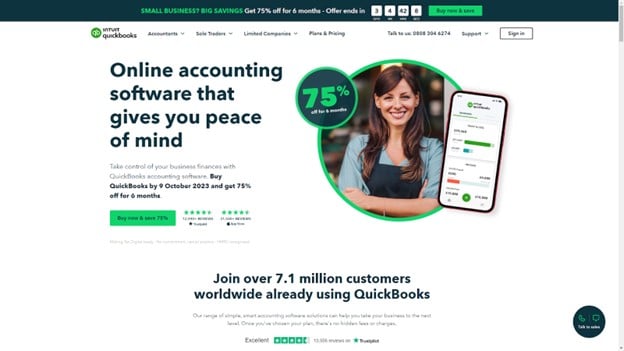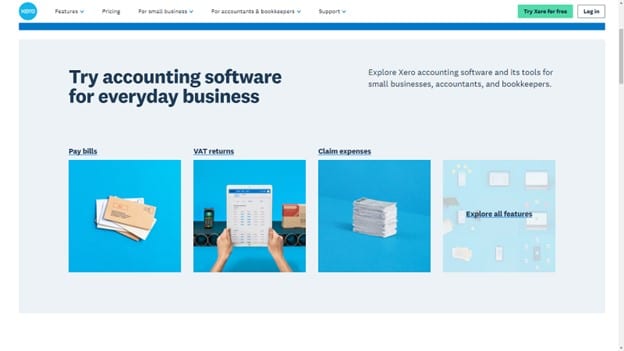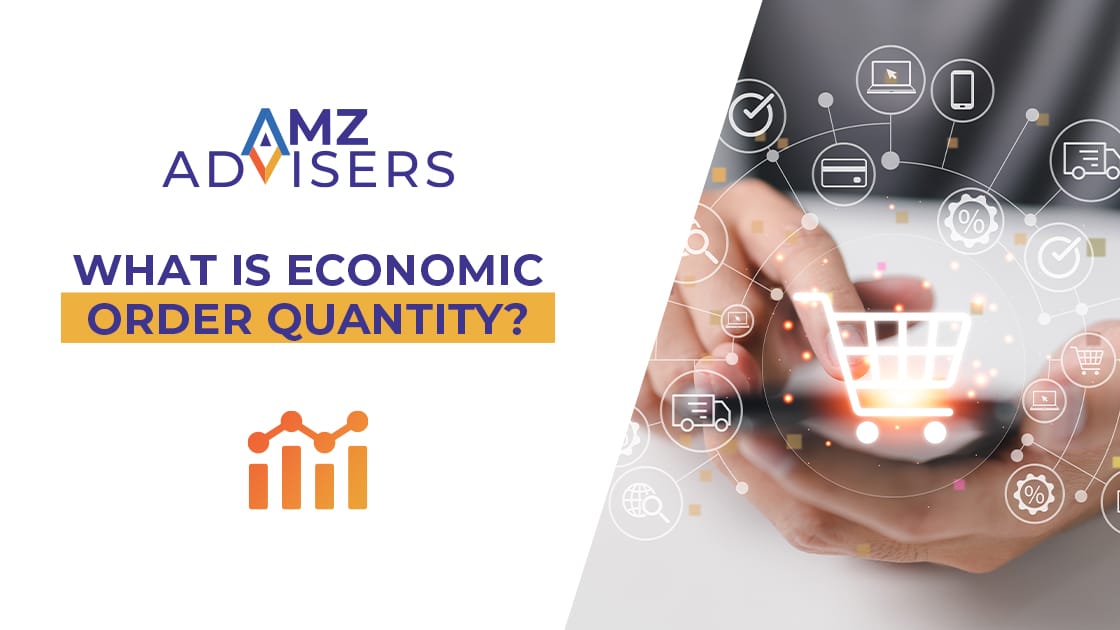Ecommerce bookkeeping and accounting is often a complex endeavor. It requires you to keep precise and accurate records of your financial data, often from multiple eCommerce platforms.
So, if you’re here, it’s because you want to learn how to automate eCommerce bookkeeping. Automating eCommerce accounting processes will go a long way in streamlining your accounting efforts, and ensuring your books are accurate and up-to-date.
Below, we go through the 5 easy steps to automating your eCommerce accounting and bookkeeping.
What is Accounting Automation?
Accounting automation is the process of using specialized accounting automation software to automate accounting tasks. Often, this is the transfer of data from your eCommerce store to your accounting software.
It can also include tasks like calculating tax according to the correct jurisdiction, sending invoices, and tracking inventory and COGS (cost of goods sold).
Ecommerce bookkeeping and accounting automation is preferable to manual bookkeeping because it’s less open to human error. The time it takes to get your data from point A to point B is also considerably quicker.
The data that exports from your eCommerce business depends on the accounting eCommerce software you choose. However, it can include:
- Sales
- Refunds
- Fees
- Tax calculations on sales
- COGS
Ecommerce accounting automation keeps you in control of your business’s finances, for smart, data driven decision making.
Automating eCommerce accounting can be done in 5 easy steps:
1. Decide What to Automate
Deciding what to automate is an essential first step for your eCommerce business and accounting processes. Here are some accounting tasks you should definitely consider automating:
- Sales tax calculations. First and foremost, get the important matter of sales tax calculations sorted. Automating this will benefit you and your business no end. Choose an eCommerce automation software that helps you abide by the tax laws in the applicable countries.
- Sales data. Automate your sales data so that it’s consolidated and broken down into relevant transaction categories. For example, refunds, shipping, ad expenditure, and fees. This will give you a clear overview of your financial operations.
- Bank account reconciliation. Bank account reconciliation is the process of matching your accounting records with your bank account and bank statements. This ensures your records are accurate and up-to-date. It also helps you spot any discrepancies within your records.
- Payroll. Ensure your employees are paid accurately and on time by automating payroll. Automation software can also track timesheets and employee expenses. Plus, it’ll allow employees to submit information through their own portal.
- Financial reports. Use eCommerce accounting automation to generate financial reports. These are vital for assessing your business’s finances, identifying sales trends, budgeting, and developing effective business strategies.
- Inventory management. Manual inventory tracking can be a nuisance. Automation software can help you manage your inventory so that your store consistently reflects your true inventory levels. Additionally, you may be alerted to low stock levels and identify your best-selling products.
- COGS: Automating and tracking your COGS calculations will help ensure you stay profitable. You’ll know how much each product costs compared to how much revenue it’s generated. From this, you can devise an effective business strategy based on real figures.
2. Choose Your Accounting Software
There are some solid options for accounting software. Here are some top picks:
QuickBooks
QuickBooks is a popular accounting software with plenty of professional accounting features. It’s ideal for eCommerce businesses, as well as accountants. Take advantage of features like bank account reconciliation, detailed financial reporting, and cash flow insights.
You can also add Payroll to your subscription from just £2 per month on all the plans except for ‘Self-Employed’.
Prices for QuickBooks plans are reasonable, beginning at £10/month. However, the company often has generous discounts and special offers running so you can bag your plan at a significantly lower cost.
Xero
Xero is another top choice for eCommerce businesses. You can pay your bills directly through the software, and also claim expenses, manage projects, and generate insightful reports. Xero has a VAT checker too so you can file accurate tax returns. Payroll comes at an additional cost per month.
Xero is a little more expensive than QuickBooks, with plans beginning at £15/month. It’s also worth noting that it has more ‘optional extras’, meaning you have to pay extra for features like expense management and project tracking. However, it is known to be the simpler and more user-friendly of the two.
Sage Accounting
Sage Accounting is a software suitable for smaller businesses. You can automate your eCommerce financial data entry, connect your bank account, and pay your staff. Sage generates detailed reports to help you plan your strategies and grow your business.
At the time of writing, Sage is giving its first-time customers a generous three-month free trial. After this, you can get your hands on the software from £14/month.
3. Connect Your Accounting Software With Your eCommerce Store
This is the next vital step in automating your eCommerce accounting. You must connect your accounting software with your eCommerce store. To do this, you’ll need to choose an integration that’s compatible with both your accounting software and eCommerce platform.
You might also consider how many different stores or marketplaces you can connect simultaneously. If you sell on Amazon, Shopify, and Etsy, it’ll be helpful to consolidate the sales data from all three stores rather than just your best-selling store, for example.
There are some solid options for achieving this:
Link My Books
This integration software seamlessly links your eCommerce business with either Xero or QuickBooks. It transfers data like sales, refunds, COGS, and taxes, so that all your eCommerce business’s finances are accurately stored in your records.
Link My Books is really quick and easy to both use and set up; you can be up and running in as little as ten minutes.
Furthermore, you can connect multiple eCommerce businesses for a very reasonable cost. Selling up to 1,000 products with the Pro plan, allows you to connect up to five different channels for $49/month.
A2X
This integration is very similar to Link My Books. It transfers data seamlessly from one place to the other so that it’s all stored in your accounting software. The main difference with A2X is that you pay per eCommerce store.
For example, if you have one Amazon store and one Shopify store, you pay $19 to connect each to your accounting software. Alternatively, you can choose the ‘Multi-Channel’ option, which costs from $79/month for two channels and up to 1,000 orders.
Zapier
Zapier connects multiple apps together to automate workflows. You set up your triggers and actions, for example, for Xero to automatically create an invoice when you make a sale in Amazon, and let it do its work.
Although there is a free Zapier plan available, many of the popular eCommerce apps like Amazon Seller Central and Shopify are Premium apps. This means you must have a paid plan to connect them to Xero or QuickBooks.
The price begins at $19.99/month and depends on the number of tasks you want to do each month.
4. Connect Your Other Automation Software
If you’ve chosen to automate other business processes, like inventory management or customer relationship management, now’s the time to connect them to your cloud accounting software and/or your sales channels. Doing this will create a highly-automated, unified, and streamlined system.
Head over to the Xero or QuickBooks App Store (depending on which you’re using) to discover what apps you can link to your accounts. For example, Xero enables you to connect HubSpot, Insightly, Katana, and TidyStock, to name just a few solutions.
QuickBooks has a huge selection of apps to integrate too, including Dext Prepare, Method: CRM, SOS Inventory, and Webgility.
Both accounting software have payment gateway apps available as well such as PayPal and Wise.
If you can’t find your desired apps in your chosen software’s app store, consider using a connector app like Zapier instead.
5. Review Regularly
As you level up your business, you’ll need to regularly review your automated processes to be sure your software doesn’t hold you back. You’ll likely find you’ll need to upgrade your software plans to accommodate more orders. And, add extra functionality.
For example, if you begin this process as a sole trader, you wouldn’t need the Payroll feature included in your accounting software. However, when you sell more products, you might need to hire employees to help ease the workload.
If this is the case, you’ll want to upgrade your accounting software plan to include payroll management.
Equally, the software linking your accounting software with your eCommerce store allows a set number of orders per month. Once you hit that target, you’ll need to switch to a higher plan.
When Should I Start Using eCommerce Bookkeeping Automation?
You can start using eCommerce bookkeeping software whenever you like. However, it becomes more necessary as your business grows.
If you’re using AMZ Advisers for Amazon brand acceleration, for example, you can expect a good deal of business growth rapidly. Therefore, it helps to be prepared with appropriate automation software in place ready.
Author
Link My Books is a software to help ecommerce sellers automate their accounting. 10,000+ sellers from the UK, US and Australia are using Link My Books to streamline their bookkeeping process and ensure complete accuracy.








